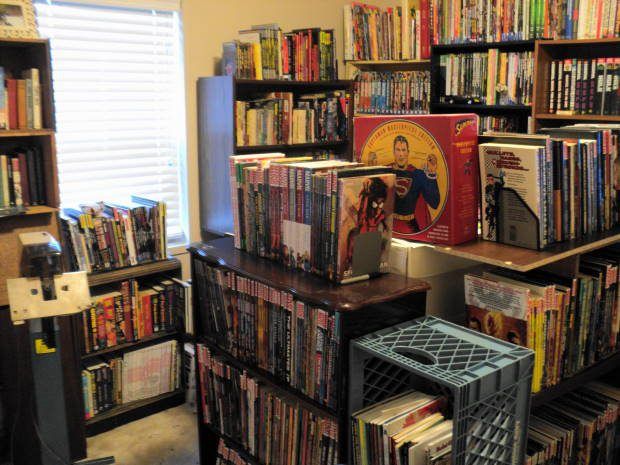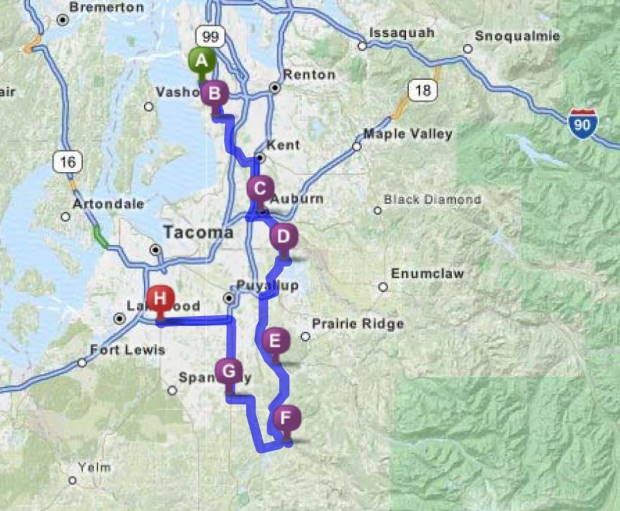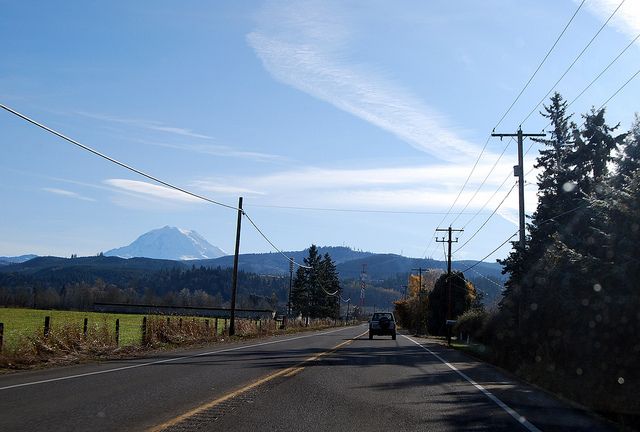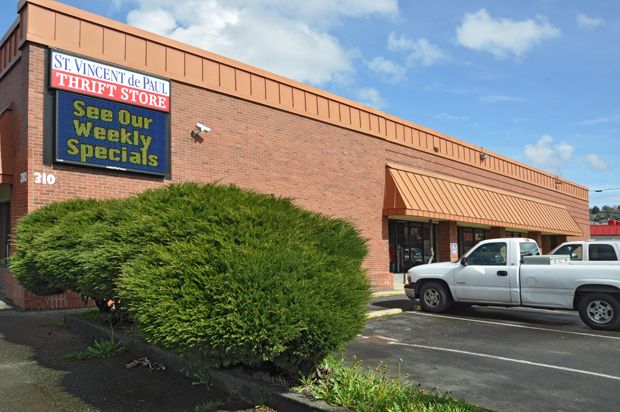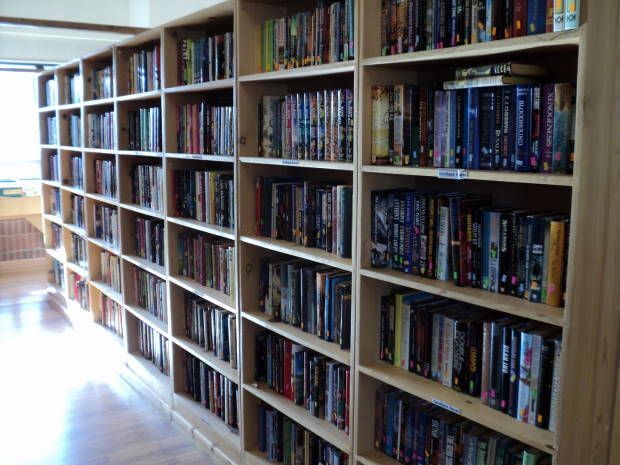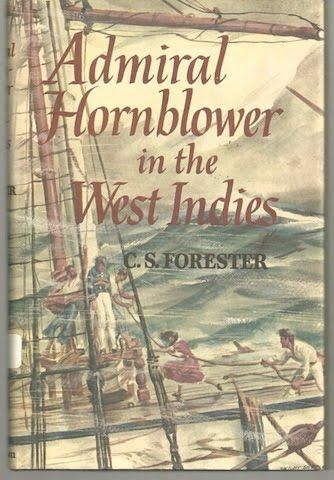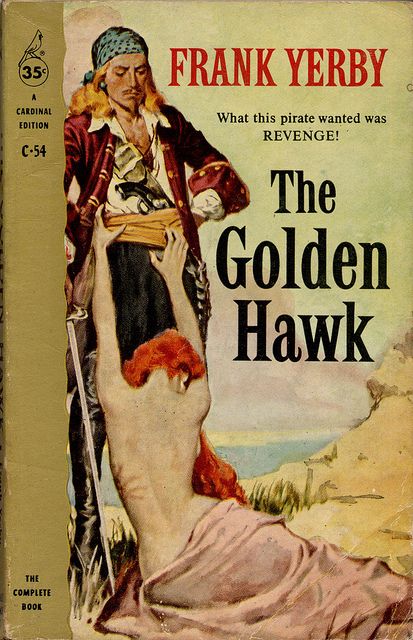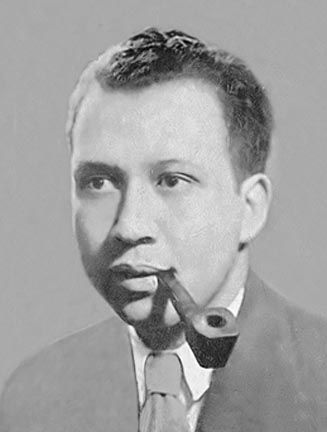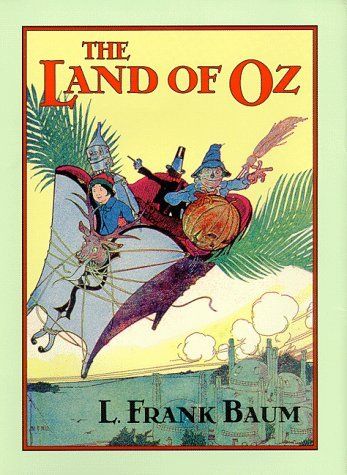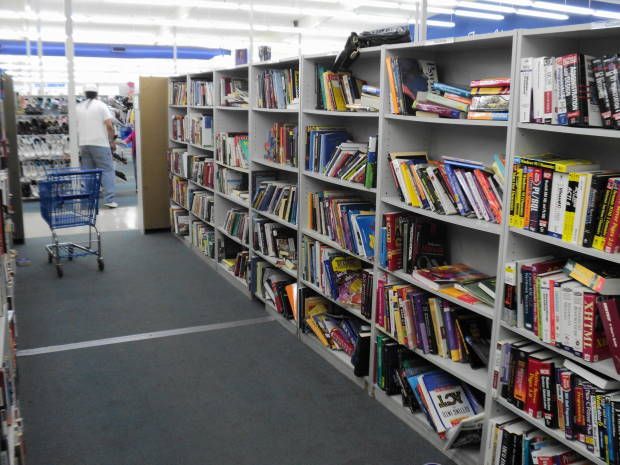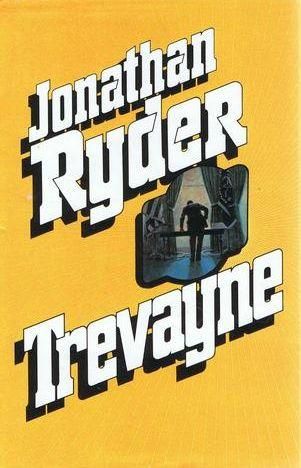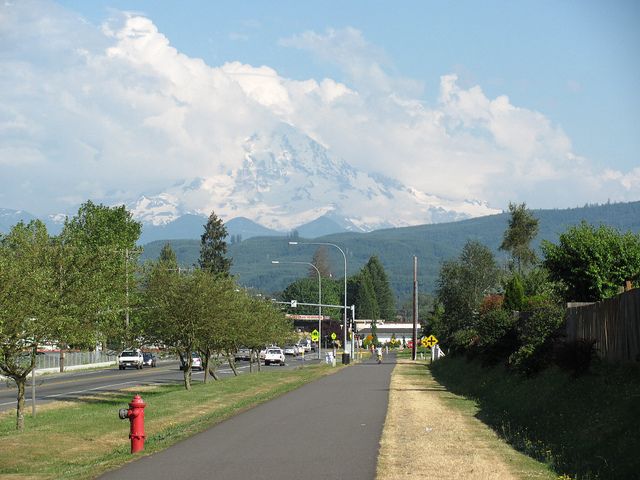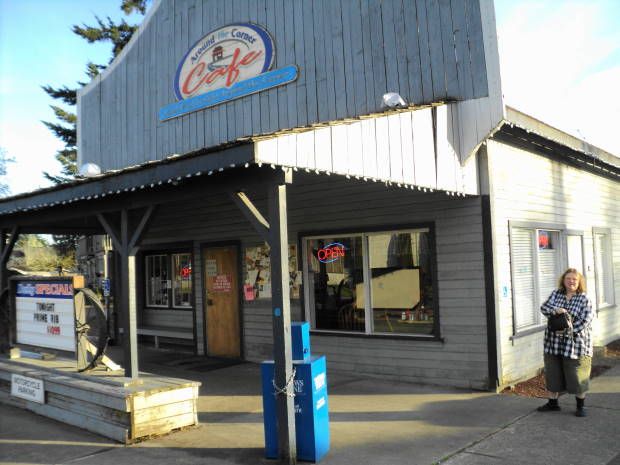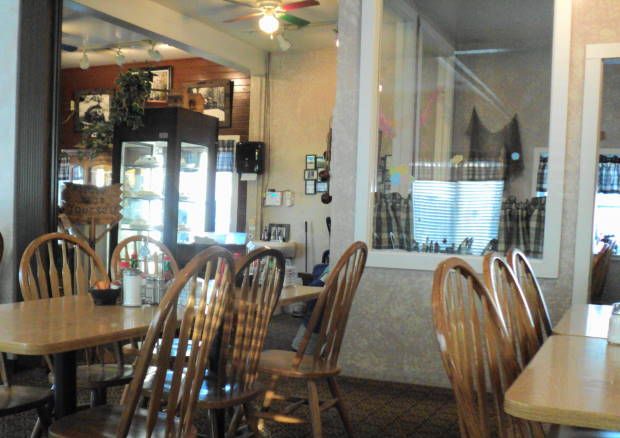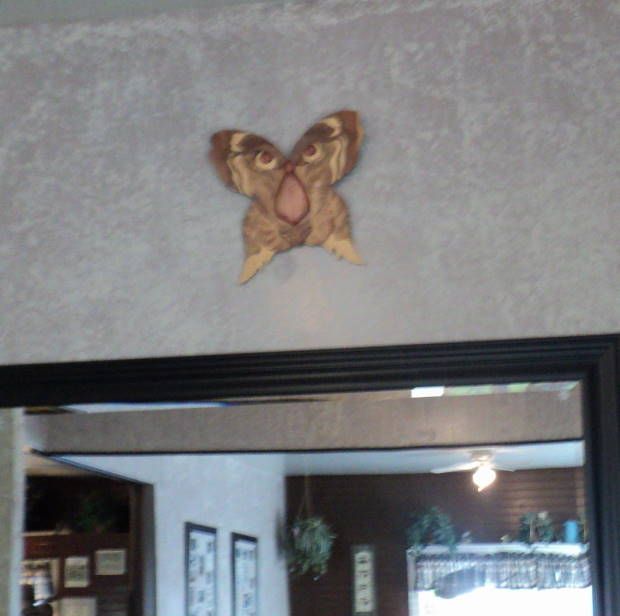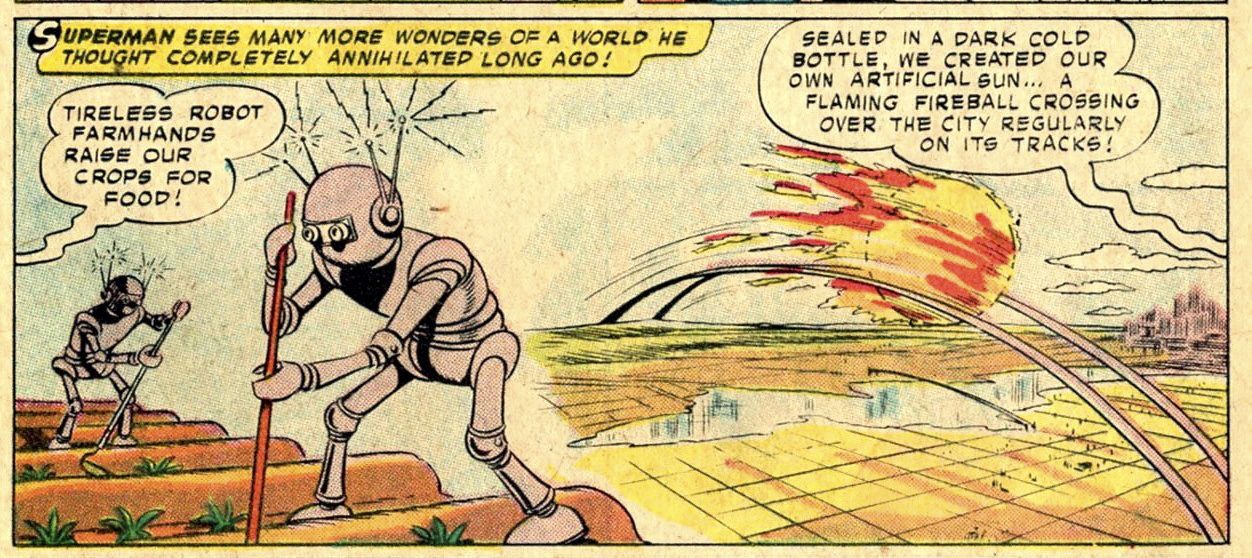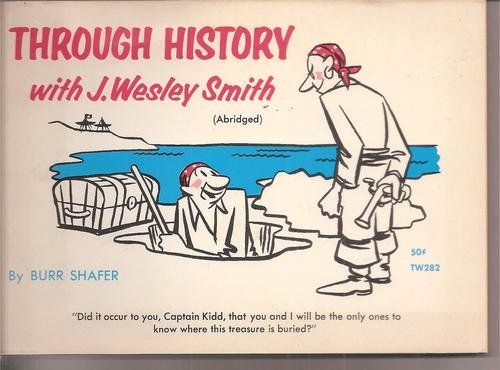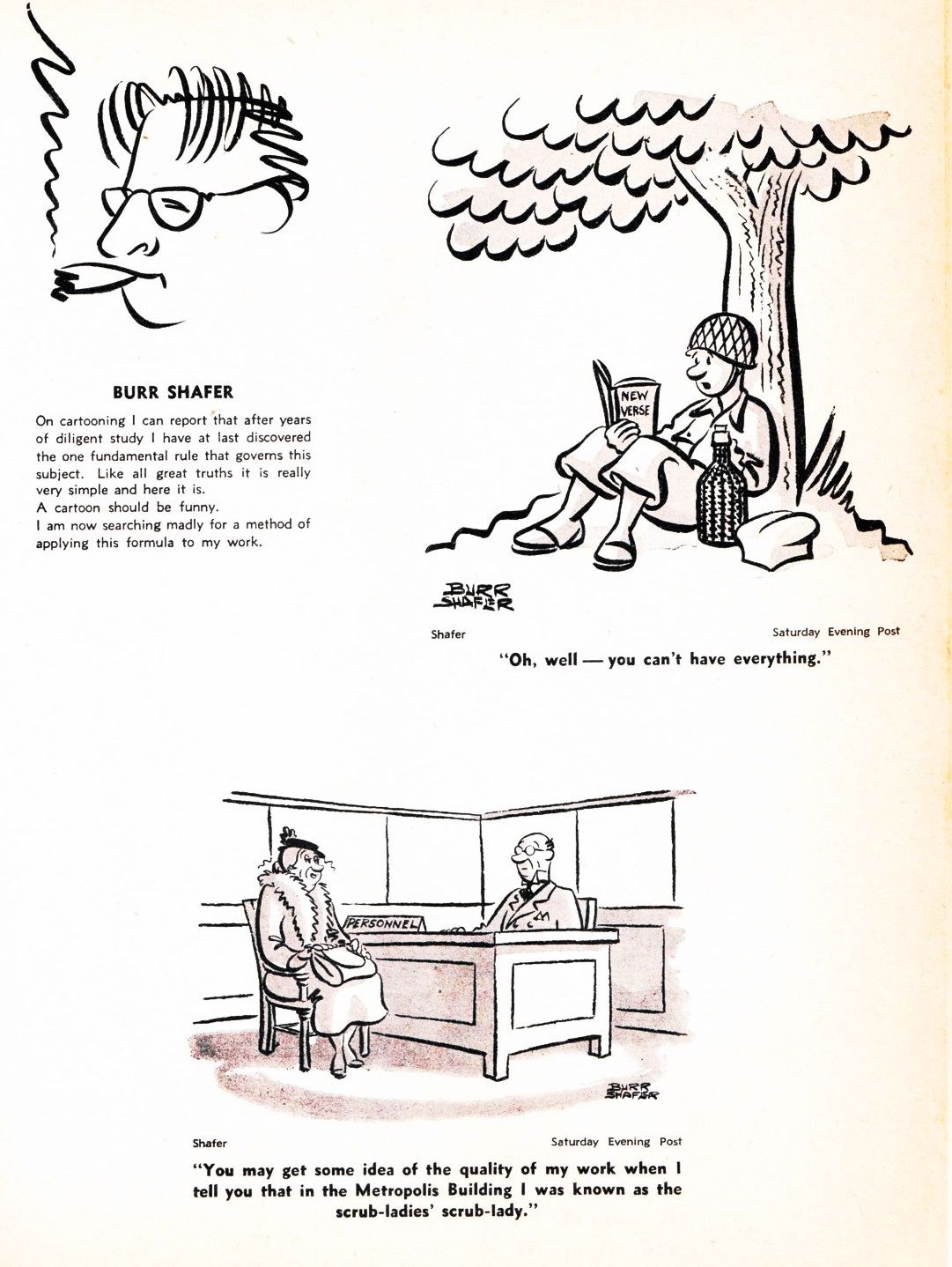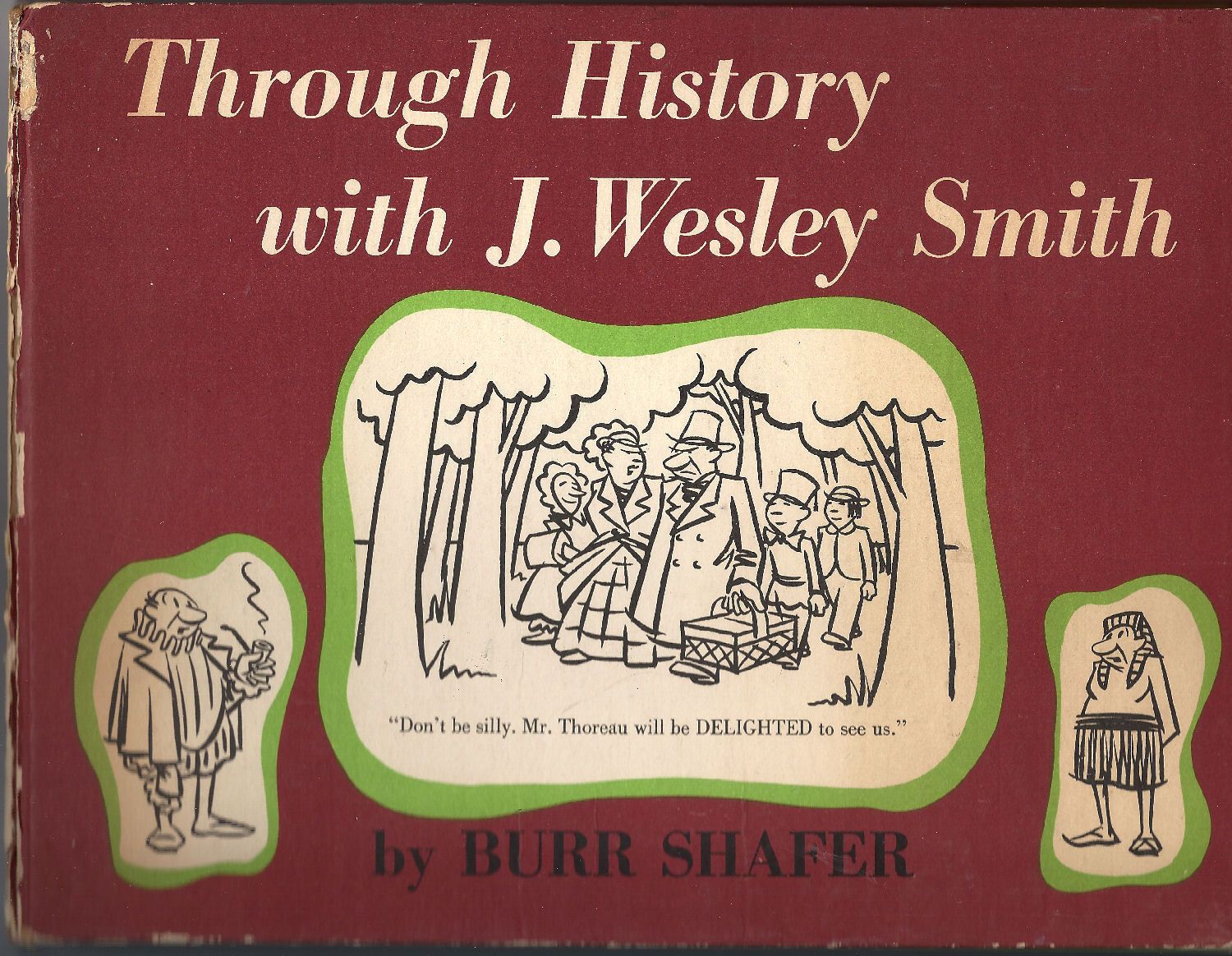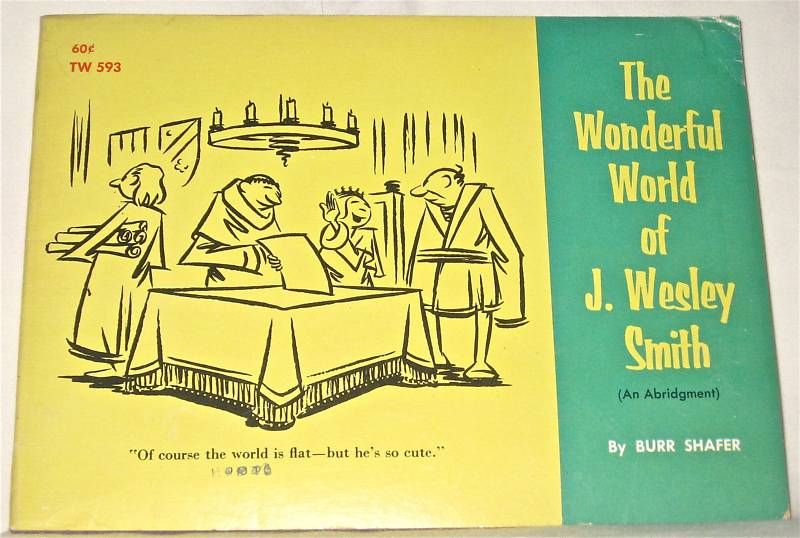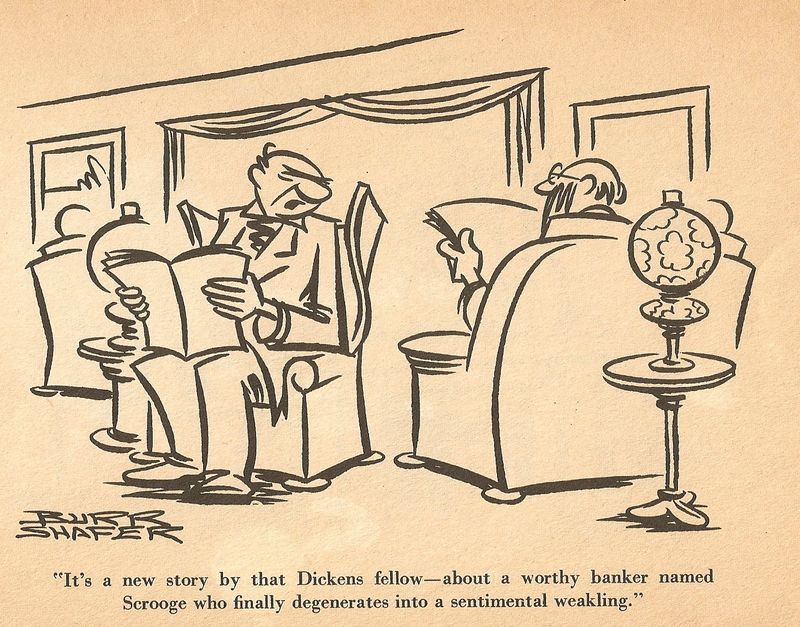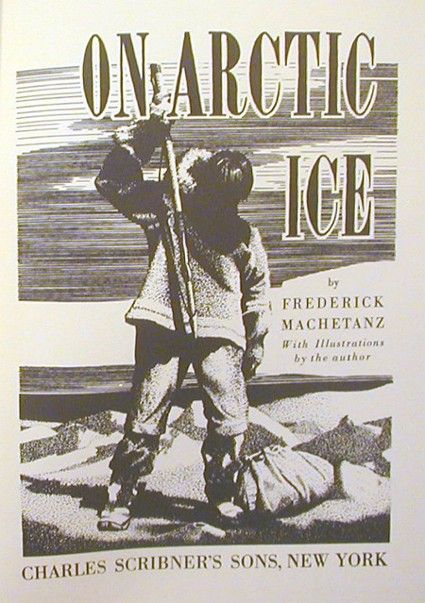We don't really need a reason to hit the road. Generally, it's just that either Julie or myself gets a case of mild wanderlust, coupled with a need to get out and away from under all the various work things that pile up.
This particular Saturday, it was mostly me. I had finally got more or less caught up, after the weeks of work leading up to taking the class to the Emerald City convention, as well as a bunch of other commitments. What's more, the office library was finally rebuilt and the
review pile had been cleared.
The bottom line was this. It was the first day off I'd had in two months where I didn't feel like just staying in bed all day. I was rested.
Amazingly, so was Julie. Her schedule has been as hard on her since she decided to go back to school a few months ago as mine usually is on me. So for us both to be feeling caught up on work, healthy, and rested on the same day was something of an occasion that deserved celebrating, and I said as much to my bride.
"Which direction?" was all she needed to know.
Julie had homework due Monday, and I'd used up my time off from my various jobs for ECCC, so we regretfully decided we could only manage a day trip, an afternoon's drive. Still, that's better than nothing.
Since we'd been north and east for the last couple of those, I suggested south. "Let's see if we can find that road we came up on from Centralia that time, I want to see what it looks like in daylight when the stores are open."
So south it was.
We went from our home in west Seattle out past the airport to 188th and on past the East Valley Highway, and in no time at all we were in farm country. We kept on, avoiding the freeway and staying on farm roads, towards Kent.
Despite being barely half an hour out from the city, Kent is a pretty rural place.
Julie was driving; partly because she enjoys driving and I don't, even on largely-deserted back roads. She says it relaxes her. But the other reason is that, in the same way I carry entire back stories of hundreds of DC and Marvel characters in my head, Julie carries a map of every thrift store and junk shop in the greater Seattle area in hers. She had already thought of places she wanted to stop along our route. I'm happy to let her navigate, because I usually haven't been to the shops she is thinking of and I often find interesting books.
The first of these was the St. Vincent's thrift store in Kent.
I was very pleased to see that they had a clean and well-maintained book section. This is always a luck-of-the-draw kind of thing when you're looking through this kind of place, it really depends on the personalities of the individual employees. Sometimes the folks in charge of the section are genuinely book people, and sometimes not.
I was interested to see that the hardcover fiction was organized in a non-standard way, but it made perfect sense for a thrift store that gets a lot of traffic. They'd segregated out the standard stuff you always see-- the Danielle Steele, the Stephen King, the Tom Clancy, the John Grisham, the Mary Higgins Clark, and so on-- and given each of those authors their own shelf. THEN they split the remaining books out by genre. I assume it's easier for the staff because then they don't have to fuss so much with the shelving arrangements when new donations come in. But it was also terrific for me, since I was able to bypass an entire row of shelves and get right to the interesting stuff.
Truthfully, it looked like the dream arrangement for professional bookscouts, who spend all day digging through thrift stores and get really sick of seeing dozens upon dozens of Danielle Steele books everywhere they go. Julie tells me that thrift stores, Goodwill in particular, are finally getting wise to all the professionals trawling their bookshelves (apparently the downtown Seattle Goodwill even has one on staff who advises them about which books to hold back and sell online.)
But at least on this afternoon in Kent, you could still turn up some nice pieces. I found two.
Both of them were Book Club editions, but from back in the fifties when those were done slightly less on the cheap and bore a much closer resemblance to the original editions. And amazingly well-preserved. (There were several other similar naval adventures in the 'vintage' section, which suggested to me that someone's grandfather had recently passed away or something and a younger relative had just put all the books in a box and donated them without looking at them; because from the pristine shape they were in, they looked like they'd all come from the same home. No sun damage, no tanning, nothing.)
I chose the two I did for fairly arbitrary reasons. Admiral Hornblower In The West Indies I picked up just because I hadn't read it and I am slowly working my way through C.S. Forester's books as I run across them.
The Golden Hawk was completely on the strength of the cover art. I just liked the look of it. It's the story of pirate Kit Geraldo, and his search for revenge on the corrupt island governor that killed his mother. He makes common cause with the fiery female pirate Rouge, who also has reason to hate the governor, and together they have a hot-blooded Caribbean swashbuckling good time trying to take out evil Don Luis Del Toro. As it turned out, this was a very successful book when it came out, and it was made into
a movie with Rhonda Fleming and Sterling Hayden in 1952.
Author Frank Yerby has an interesting claim to fame; he was the first African-American best-selling author, the first to sell a million copies and to have a book of his made into a movie. He did it with 'costume' adventures like The Golden Hawk, but always managed to sneak in some social commentary. (For example, a saucy female pirate captain like Rouge was unheard of when the book was published, and Kit's dark secret is his mixed parentage; he is the product of a rape.)
Despite this, he was often criticized by black leaders of the time for not writing more pointedly about racial issues. But Yerby always said his job was to entertain, not to 'inflict' his politics on readers.
That doesn't mean he didn't have any. Citing the civil rights situation in the U.S. as being intolerable, Frank Yerby moved to Spain in 1955. Fascist Spain under General Franco apparently was preferable to Yerby, which kind of boggles the mind when you think about it. Of course, he was rich, which doubtless helped. (Nevertheless, the state of Georgia still proudly claims Frank Yerby as one of their own-- I dug up the photos of him from their online state encyclopedia.) He settled in Madrid, where he spent the rest of his life, writing thirty more bestselling novels until he passed away in 1991.
I wish I could say I knew all that when I bought the book, but I did not-- I just liked the cover. But now that I do know all of it, I'm doubly pleased to own it; and the book's a fun read, too. About half bodice-ripping romance and half Errol Flynn swashbuckler, and Frank Yerby definitely knew how to bring it for the action scenes. I'm not surprised his books did well.
Glancing through the juvenile section, I found a couple of nice Oz hardcovers, as well.
Not originals, of course. These were the Konecky & Konecky facsimile editions from the early 1990s. But except for the publisher's imprint and the glossy cover boards, they are indistinguishable from the originals. I just like having them around to read, and since it was half-price day, we got them for a buck and a half each. (I do wish the publishers that pick up the Oz books for reprinting would go beyond the Baum books, though... it'd be nice to be able to get inexpensive copies of the Ruth Thompson books as well.)
That was it for Kent. We ambled on south towards Auburn, where Julie wanted us to try our luck at the Goodwill.
Sadly, Auburn's Goodwill was the classic example of a book section run by thrift-store employees who do not care about books at all.
I know I sound a little ridiculous and fussy, and I certainly don't expect thrift-store staff to have degrees in library science or anything, but it wouldn't kill them to separate the fiction from the non-fiction, or the adults from the juveniles. I don't even need them to go alphabetical by author or separate out genres or anything. Just, for Chrissakes, apply a little thought to the idea that people can find books they want more easily if you give them some sense of where to look for them. 'The books are in the book section' is not adequate.
As it was, this was just a pile that happened to be stacked in sections on the shelves, barely a half-step up from a table at a garage sale. Normally I wouldn't even bother digging through it all, but today I could tell Julie was going to be a while.
And I did find a good one. This was a real bookscouting, diamond-in-the-pasture kind of moment for me because I'd been wanting this particular book for years. It was Robert Ludlum's fourth novel, Trevayne.
The reason it's collectible is because he originally published it under a pen name, "Jonathan Ryder." Robert Ludlum published three novels under a pen name-- two as Jonathan Ryder (Trevayne and The Cry of the Halidon) and one as Michael Shepherd (The Road to Gandolfo.) Unlike most other writers who use pen names, Ludlum wasn't switching genres or anything. The books are all recognizably Ludlum-style espionage adventures. He didn't like using the pen names, and later said it was only because his publisher insisted that he not flood the market. So newer editions have all appeared under the Ludlum name.
But the early ones with the pen names are highly sought after by collectors. And here in this shitpile of a book section was, by God, a hardcover "Jonathan Ryder" edition of Trevayne.
It wasn't a first edition. The spine was a little cocked and there was some slight sun bleaching on the dust jacket. Nevertheless, that was a pretty hot item to dig out, and I was ridiculously pleased with myself, finding it there for two dollars. And I knew I could probably fix the spine by clamping some weights on it. (The nice thing about working in printshops is that I can do a lot of my own bookbindery and repair.) The moral of the story, I decided, is that no matter how crappy the shelves look, if you have the time to go through them, take the time.
Anyway, that was it for Auburn. We hit the road again, continuing southeast on route 162, until we reached Orting.
Neither one of us had ever heard of it before, but it's a pleasant little place once you get away from the strip mall that dominates the north end of town.
We decided it was time to stop for dinner.
Now, normally I would skip over this part. But we found an incredible restaurant and they deserve a plug.
The Around The Corner Cafe is exactly what its name promises. It's a small-town restaurant with a traditional menu.
But the food itself is amazing. This is why we like to try small-town indie restaurants when we travel; it makes all the difference when it's a farm town place that's getting everything fresh and local.
I had possibly the best burger I've ever had in my life, and Julie said the same thing about her prime rib. The staff were all genuinely friendly and there was a delightful small-town vibe to the place-- everybody knew everyone and there was a lot of laughing and kidding one another going on. Just a great restaurant all around. If, by some freakish turn of events, you ever end up in that part of the state of Washington, you definitely should check it out. But bring an appetite, because they eat hearty in Orting.
At this point, you may very well be grumbling, okay, fine, you had a nice trip and found some rare books and ate a nice dinner. When are you going to talk about COMICS?
The truth is... well, I didn't find any on this trip, not even a few crappy dog-eared Archie digests. In fact, after dinner we ended up wasting the rest of our trip trying to find the town of
Electron, Washington-- a road sign told us it was just ahead, and we were determined to get a picture of downtown Electron. (Upon seeing the sign, I instantly had a vivid mental picture of a shiny little town where everyone is dressed like the Weisinger-era Kandorians and the cars all have fins.)
But we never did find it, and when it got dark we gave up and headed for home.
So, no comics at all this trip.
But Julie did find me a book of cartoons at our local Goodwill, while I was busy writing: Burr Shafer's Through History with J. Wesley Smith. So the weekend was not a completely comics-free event.
Burr Shafer was one of the great magazine gag cartoonists, back when there still was such a profession. He was very popular from the 1940s to his death in 1965.
His most significant creation was "J. Wesley Smith," a doofus who had cameo appearances throughout history.
The Smith books were beloved by librarians and schoolteachers everywhere, because they were a way to get kids talking about historical events.
Me, I just liked them because they were funny. When I was in junior high school I read their copy of The Wonderful World of J. Wesley Smith some hundreds of times.
I'd forgotten all about J. Wesley Smith and his skewed view of history until Julie came home with that... and I was delighted to renew my acquaintance, especially since I had not seen this book before. Now Burr Shafer's on the shopping list again.
Because, to be honest, the afternoon didn't really sate our wanderlust. We feel an actual road trip coming on, with books to be scouted and backwater towns to explore. Probably some time in the next couple of weeks, if we can make it work with Julie's school schedule.
Maybe we'll even find some real comics then. We've been having quite a run of luck; last night I turned up a bunch of cool stuff at the local Value Village. But nothing comics-related, sadly.
But in the meantime, well, I'll see you back here next week. Talking about actual comic books. I promise.

